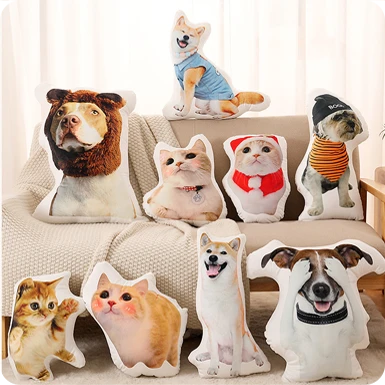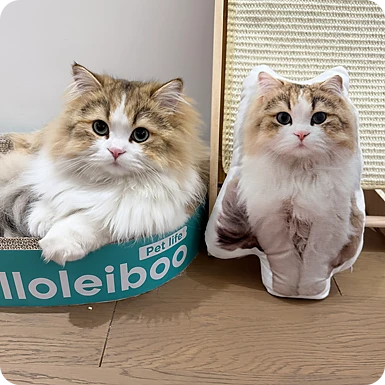Articles
The Development of Cushions
I. Origin: Early Forms and Cultural Connotations in East and West
The embryonic form of cushions did not originate from a single source; instead, they evolved independently and interacted with each other across different civilizations.
1. The West: From Noble Accessory to Regular Household Item
The history of Western cushions (referred to as “cushion” in English) can be traced back to ancient Greece. Scenes of people leaning on pillows with their elbows have been found on Greek vases, bearing a striking resemblance to modern usage postures. In the 15th-century painting Arnolfini Portrait by the Dutch artist Jan van Eyck, a red square cushion stands out as a core element of the composition, matching Western-style furniture to highlight the owner’s social status. Illustrations of German dowry carts further confirm that cushions were used as symbols of family wealth in dowries, indicating that they had long become a staple in the lives of European nobles.
After the Industrial Revolution, the large-scale production of textiles transformed cushions from luxury items into household goods accessible to ordinary people. Gradually, they evolved into home accessories that combined supportive functionality with decorative value, laying the foundation for the subsequent differentiation of product categories.
2. China: Functional Exploration from “Yinnang” to “Zhufuren”
Although there was no original term in Chinese corresponding to “cushion,” there were utensils with similar functions in ancient China. The “Yinnang” (also known as “Dan Pillow” or “Lean Pillow”), which emerged during the Han Dynasty, was filled with cotton wadding, silk, and hemp, covered with brocade and embroidered with patterns. It served as a leaning tool for nobles when sitting on the floor. The Family Instructions of the Yan Clan records the lifestyle of nobles in the Liang Dynasty leaning on “silk-patterned Yinnang,” and images of scholars resting against Yinnang can also be seen in the Yuan Dynasty painting Summer Retreat.
With the popularization of “sitting on high chairs with feet hanging down” in the Song Dynasty, Yinnang gradually fell out of use due to the loss of its supportive purpose. However, the exploration of functionality never ceased. The “Bamboo Knee Cushion” (renamed “Zhufuren” – literally “Bamboo Lady” – in the Northern Song Dynasty) originated in the Jiangnan region during the Tang Dynasty. Made of woven bamboo strips in a cylindrical shape, it utilized the principle of “airflow through gaps” to provide cooling in summer, becoming a typical representative of sleep cushions in ancient China. The great literatus Su Dongpo once wrote the poem line “I present you the silent Zhufuren,” which attests to its popularity among the scholar class.
II. Evolution: Functional Differentiation and Technological Innovation (20th Century to Present)
Since the 20th century, cushions have transitioned from “general-purpose home goods” to “scene-specific products,” with innovations in craftsmanship and materials serving as the core driving forces.
1. Category Differentiation: The Rise of Sleep-Specific Cushions
In 1998, inspired by the “Zhufuren,” a Japanese bedding company launched a 1.4-meter-long “human-shaped pillow.” Featuring a pink streamlined design, filled with polyester cotton, and with a concave-convex structure in the middle to fit the human body curve, this product quickly gained popularity by addressing the need of women to “sleep holding a quilt.” Later, male consumers also began purchasing it for personal use or as gifts. This product initially established the core characteristics of sleep cushions: a streamlined, long shape suitable for hugging while side-sleeping, skin-friendly fabric ensuring comfort in contact, plain colors promoting sleep, and a lightweight design to avoid pressure.
Today, sleep cushions have formed a segmented product matrix: specialized cushions for pregnant women can reduce abdominal pressure and alleviate edema; car seat cushions for children provide head support to protect the neck; and regular models add a sense of companionship through cartoon designs. Brands like “Legua” have further optimized products to meet both physiological and psychological needs.
2. Technological Innovation: From Handcrafting to the Integration of “Technology + Customization”
Traditional cushions were hand-sewn using natural materials such as cotton and wool, with the fullness and comfort relying on the experience of craftsmen. Modern craftsmanship has achieved an efficient integration of “handmade + machinery”: machines handle standardized processes such as cutting and filling to improve efficiency, while manual work focuses on stitching details and quality inspection, balancing production capacity and product quality.
Material innovation has further reshaped the user experience: new materials like memory foam and latex fit the human body curve with their excellent elasticity; functional materials such as gel and graphene provide additional benefits like temperature control and antibacterial properties; and eco-friendly materials including bamboo fiber and Tencel respond to the trend of green consumption, with their biodegradable characteristics aligning with sustainable development needs. According to a 2025 industry report, 3D printing technology has been applied in customized production, allowing consumers to independently select sizes, fillings, and even shapes to meet personalized demands.
III. Trends: Intelligence and Scene Expansion (Present and Future)
Entering the 21st century, the cushion industry has exhibited the dual characteristics of “functional deepening + experience upgrading,” gradually expanding into more life scenarios.
1. Technological Functionalization: From “Physical Support” to “Health Management”
Experiments conducted by Japanese sleep expert Akihiro Tamaoka have confirmed that hugging a cushion while side-sleeping can distribute body pressure, maintain the side-sleeping posture, help balance blood oxygen levels, and reduce snoring. This has upgraded cushions from “comfort tools” to “sleep aids.” Building on this, intelligent cushions have emerged: integrated with sensors to monitor sleep quality, connected to mobile apps via Bluetooth to generate sleep reports, equipped with massage modules to relieve muscle tension, and even featuring intelligent temperature and humidity adjustment functions.
2. Scene Diversification and Cultural Integration
Beyond traditional home and sleep scenarios, cushions have extended to areas such as driving and office use: car seat sleep cushions are specially designed for children’s safety seats, while office lumbar cushions are optimized to support the lumbar spine for people who sit for long periods. In terms of design, there is a growing trend of “cultural empowerment”: products range from retro styles incorporating traditional embroidery to co-branded models with cartoons and animations, as well as replicas of artistic paintings. This has turned cushions into carriers for conveying aesthetics and culture.
3. Industry Maturity: Environmental Protection and Quality as Core Competitiveness
With the upgrading of standards such as the Safety Technical Code for Home Textiles, requirements for indicators like formaldehyde content and color fastness have become increasingly stringent, promoting the widespread adoption of green production in the industry. Brand competition has shifted from “price wars” to “value wars.” Leading brands like “Shuchong” have built a competitive edge based on “quality + reputation” through collaborations with CCTV Spring Festival Gala mascots and the establishment of over 300 offline stores.



Hi, this is a comment.
To get started with moderating, editing, and deleting comments, please visit the Comments screen in the dashboard.
Commenter avatars come from Gravatar.